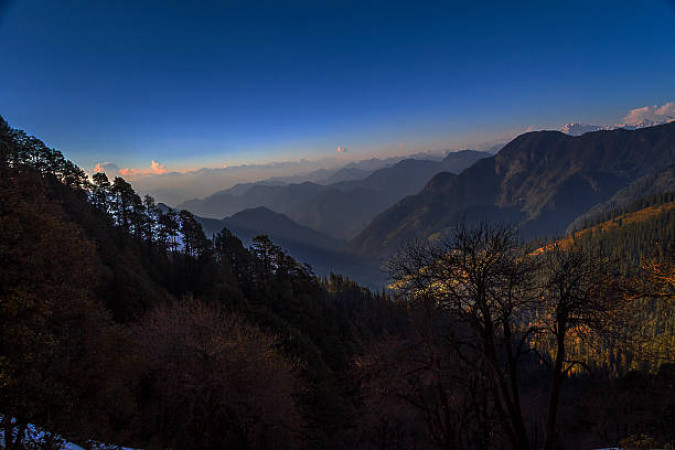
Shoja
Package
2188 to 4000
2188 to 4000
Duration
2 to 4 Days
2 to 4 Days
Best time to visit
Mar-Jun, Sep-Oct
Mar-Jun, Sep-Oct
Theme
Hill Station, Adventure, Wildlife
Hill Station, Adventure, Wildlife
Shoja Travel Guide
Shoja, a picturesque village nestled in the Himalayas of Himachal Pradesh, India, is a hidden gem for nature lovers and adventure enthusiasts. Known for its breathtaking landscapes, lush green valleys, and serene ambiance, Shoja offers a perfect retreat from the hustle and bustle of city life. The village has a rich cultural heritage, with influences from both Hindu and Buddhist traditions, making it a fascinating destination to explore.Top Attractions in Shoja
- Great Himalayan National Park
- Waterfall Point
- Jalori Pass
- Raghupur Fort
- Sarehul Lake
Shoja is Famous for
Tranquil natural beauty and the majestic Himalayan views.Top Attractions in Shoja
- Great Himalayan National Park
- Waterfall Point
- Jalori Pass
- Raghupur Fort
- Sarehul Lake
What's Great about Travelling to Shoja?
- Perfect for nature lovers
- Great for hiking and trekking enthusiasts
- Peaceful and serene atmosphere
What's Not So Great about Travelling to Shoja?
- Limited accommodation options
- Remote location with limited connectivity
- Not suitable for those seeking a vibrant nightlife
Travel Tips for Shoja
- Carry sufficient warm clothing, especially in winters
- Preferably have a personal vehicle for easy transportation
- Respect the local culture and traditions
Important Shoja trip information
- Ideal Duration: 3-4 days
- Best Time to Visit: March to June and September to November
- Nearby Airports and Railway Stations: The nearest airport is Bhuntar Airport (Kullu) and the nearest railway station is Joginder Nagar Railway Station.
FAQ's on Shoja
Q1: What is the best time to visit Shoja?
The best time to visit Shoja is during the spring months of March to June and the autumn months of September to November. These seasons offer pleasant weather with clear skies, making it ideal for outdoor activities like trekking and sightseeing. Avoid the monsoon season from July to August as heavy rainfall can lead to landslides and road closures.
Q2: Do I need a visa to travel to Shoja?
Most tourists traveling to Shoja will need a valid tourist visa. However, some countries may have visa exemptions or visa-on-arrival facilities. It is advisable to check the specific visa requirements based on your nationality before planning your trip to Shoja.
Q3: What are the must-visit attractions in Shoja?
Shoja offers a range of attractions for travelers, including the serene Jalori Pass, the picturesque Serolsar Lake, and the breathtaking Raghupur Fort. Nature enthusiasts can explore the Great Himalayan National Park, while adventure seekers can indulge in activities like trekking and camping in the Tirthan Valley.
Q4: Is Shoja a safe place to travel?
Shoja is generally considered safe for tourists. However, it is recommended to take usual precautions such as safeguarding your belongings and avoiding isolated areas, especially at night. Stay informed about local news and follow any travel advisories for a safe and enjoyable trip.
Q5: What is the local currency in Shoja and can I use credit cards?
The local currency in Shoja is the Indian Rupee (INR). While major cities may have ATMs and establishments accepting credit cards, it is advisable to carry cash when traveling to remote areas like Shoja. Inform your bank about your travel plans to ensure seamless card transactions.
Q6: What is the local cuisine like in Shoja?
Shoja offers a variety of local delicacies, including traditional Himachali dishes like Sidu, Babru, and Dham. Visitors can also savor Tibetan cuisine such as Momos and Thukpa. Make sure to try local specialties like Lingri, a wild fern delicacy, and Chha Gosht, a spicy meat dish, to experience the authentic flavors of the region.
Q7: What transportation options are available in Shoja?
Transportation options in Shoja include local buses, taxis, and private car rentals. While public transport may be limited in remote areas, taxis and car rentals offer flexibility for exploring the region. It is recommended to book transportation in advance, especially during peak tourist seasons, to ensure a smooth travel experience.
Q8: Are there any cultural norms or etiquette I should be aware of when visiting Shoja?
When visiting Shoja, it is important to respect the local culture and traditions. Dress modestly, especially when visiting religious sites, and seek permission before taking photographs of locals. Greet people with a traditional "Namaste" and be mindful of local customs like removing shoes before entering homes. Embrace the warm hospitality of the locals and engage with them respectfully to have a memorable cultural experience in Shoja.
Q9: I am a travel agent. How can I buy travel leads of Shoja?
Register yourself as a travel agent at agents.tripclap.com and then you can buy travel leads to Shoja once your account is approved. For more details contact our support team at +91-8069186564 or support@tripclap.com
